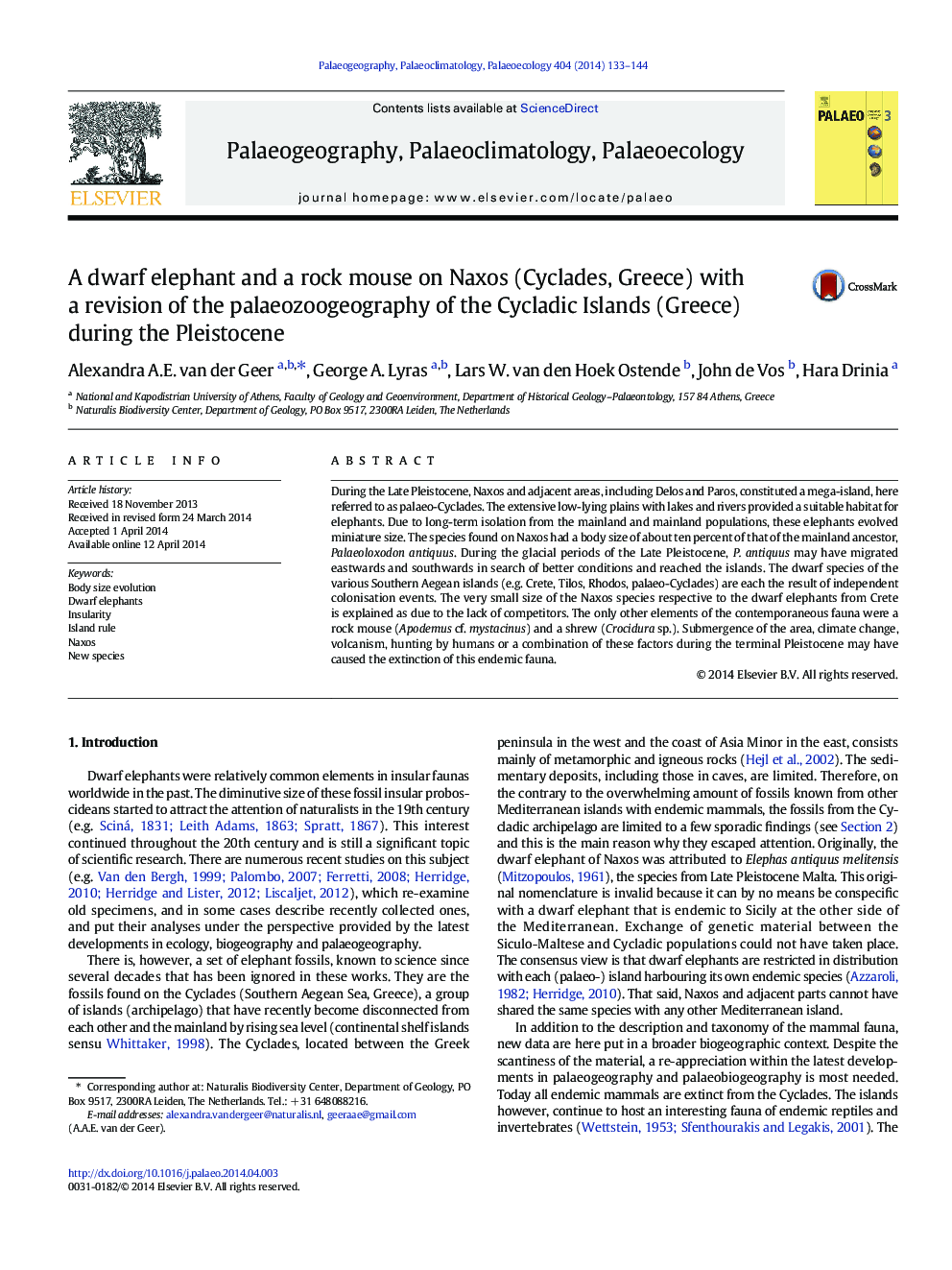| کد مقاله | کد نشریه | سال انتشار | مقاله انگلیسی | نسخه تمام متن |
|---|---|---|---|---|
| 6350147 | 1622186 | 2014 | 12 صفحه PDF | دانلود رایگان |
عنوان انگلیسی مقاله ISI
A dwarf elephant and a rock mouse on Naxos (Cyclades, Greece) with a revision of the palaeozoogeography of the Cycladic Islands (Greece) during the Pleistocene
دانلود مقاله + سفارش ترجمه
دانلود مقاله ISI انگلیسی
رایگان برای ایرانیان
موضوعات مرتبط
مهندسی و علوم پایه
علوم زمین و سیارات
فرآیندهای سطح زمین
پیش نمایش صفحه اول مقاله

چکیده انگلیسی
During the Late Pleistocene, Naxos and adjacent areas, including Delos and Paros, constituted a mega-island, here referred to as palaeo-Cyclades. The extensive low-lying plains with lakes and rivers provided a suitable habitat for elephants. Due to long-term isolation from the mainland and mainland populations, these elephants evolved miniature size. The species found on Naxos had a body size of about ten percent of that of the mainland ancestor, Palaeoloxodon antiquus. During the glacial periods of the Late Pleistocene, P. antiquus may have migrated eastwards and southwards in search of better conditions and reached the islands. The dwarf species of the various Southern Aegean islands (e.g. Crete, Tilos, Rhodos, palaeo-Cyclades) are each the result of independent colonisation events. The very small size of the Naxos species respective to the dwarf elephants from Crete is explained as due to the lack of competitors. The only other elements of the contemporaneous fauna were a rock mouse (Apodemus cf. mystacinus) and a shrew (Crocidura sp.). Submergence of the area, climate change, volcanism, hunting by humans or a combination of these factors during the terminal Pleistocene may have caused the extinction of this endemic fauna.
ناشر
Database: Elsevier - ScienceDirect (ساینس دایرکت)
Journal: Palaeogeography, Palaeoclimatology, Palaeoecology - Volume 404, 15 June 2014, Pages 133-144
Journal: Palaeogeography, Palaeoclimatology, Palaeoecology - Volume 404, 15 June 2014, Pages 133-144
نویسندگان
Alexandra A.E. van der Geer, George A. Lyras, Lars W. van den Hoek Ostende, John de Vos, Hara Drinia,